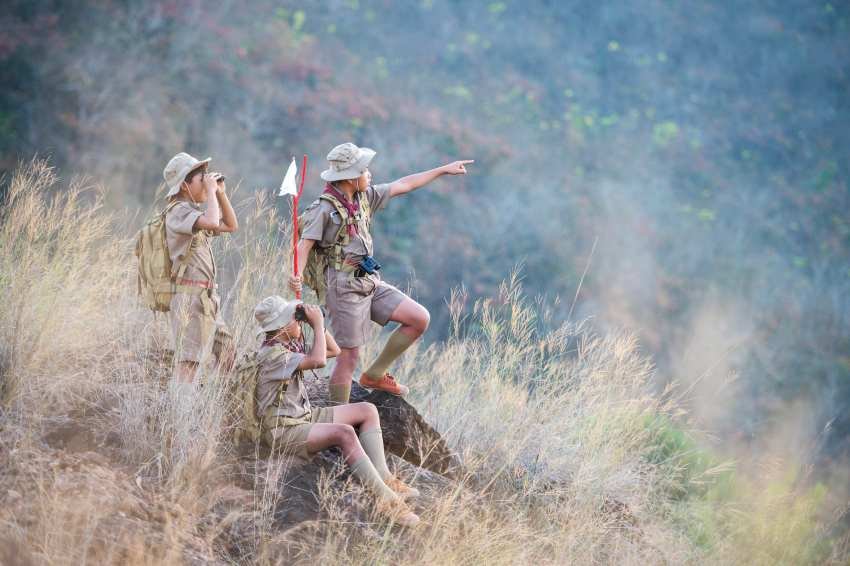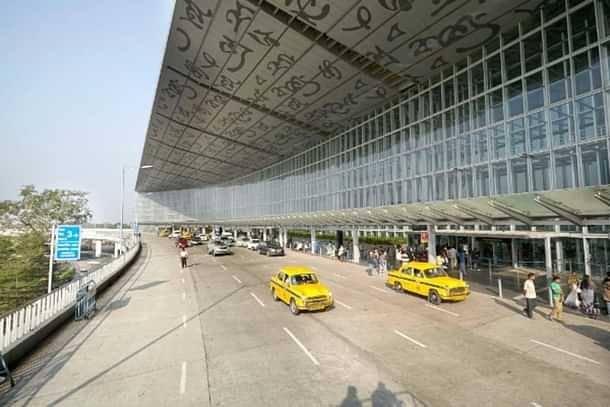Travel Trends
Cho La in Sikkim to Open for Battlefield Tourism Along with Other Historic Destinations Like Normandy, Gettysburg, and Verdun: Know More About The New Trend

Saturday, July 26, 2025
Deep in the heart of Sikkim, a state in India’s northeastern frontier, Cho La is poised to become the torch-bearer of a different kind of tourism — battlefield tourism. As the Indian administration is providing new efforts to develop Cho La as well as its other strategic locations like Doklam trijunction to a possible tourist destination destination the move is expected to further add to the history and mystery of the region. This action is part of a broader trend of battlefield tourism that is gaining popularity worldwide, from the fields of Normandy, France, where fighting raged during World War II, to the hallowed ground of Gettysburg in the United States.
Cho La and the Game Theory of Doklam
Cho La – a scenic but historically significant place in Sikkim – is one of the new sites for India’s battlefield tourism project. Located close to the Doklam Plateau – the site of a 2017 face-off between Indian and Chinese soldiers – which is the trijunction between India, China and Bhutan, this spot had previously seen high tension between the two sides in 2017. To tourists and history geeks who dream of seeing places defined by armed conflict, the decision to open Cho La and its vicinity is a big deal.
For decades, Cho La has been as remote and tightly controlled as Nathu La. But India’s signing off on tourism to the region is a game-changing move that presents us with an opportunity to explore the military dimensions of the area like never before. In continuation of the same, the Sikkim government is collaborating with the Indian Army to create all required infrastructure and facilities to make the stay safe and comfortable. Travel permits will be issued to tourists for the trijunction area on the Indian side which they can carry while travelling to Doklam.
Sikkim and Battlefield Tourism
This change is certain to be widely heralded by the tourism industry in Sikkim. Sikkim, referred to more often for its magnificent landscape and calm ambiance, has always been the wish-list of nature lovers and trekkers. It will not be the worst if the state slightly livens up the tourism with a layer of military history. It would be a draw for more than just tourists, but international visitors who want to learn about the darker, more reflective side of history.
The Sikkim government under Additional Chief Secretary CS Rao is approaching this new venture cautiously. A maximum of 30 vehicles will initially be allowed daily on the Doklam, which can be increased to 50 “based on the condition of the roads and clearance” by the army. It’s a measured act that will give them more confidence in protecting the area, while tourists will also be able to visit and explore this important site in safety.
The direct financial relief that will come from footfall in the region is only a tip of the iceberg and is an added economic benefit – battlefield tourism will also help in publicising the geostrategic significance of the region. Converting these important places into tourist destinations will not only add to the tourism infrastructure of Sikkim but also render knowledge on the strategic relevance of the region.
Global Trends in Battlefield Tourism
Cho La and the Doklam trijunction will soon add to the growing list of battlefield tourism, but it is not exclusive. All over the world places such as Normandy in France, Gettysburg in the U.S., Verdun in France, the Gallipoli Peninsula in Turkey and the Kokoda Trail in Papua New Guinea have long lured tourists interested in war history and how it affects nations and people.
Millions of visitors still flock to Normandy, site of the famous D-Day landings of World War II. Likewise, Gettysburg, in the U.S., is an essential site for those interested in the Civil War, and it is still delineated by its preserved battlefield and vivid history. Verdun, site of one of the longest and bloodiest battles of World War I, is still a symbol of sacrifice and endurance.
The boom in battlefield tourism gives countries a means of keeping the memory of events alive while giving visitors a way to experience past events more personally. In Sikkim, Cho La’s opening is likely to become something of a microcosm of this worldwide trend, introducing a new generation to the history of the region while offering the world a peek at India’s military heritage.
AN ECLECTIC BLEND OF HISTORY AND TOURISM
What distinguishes battlefield tourism from other forms of heritage tourism is that it is capable of interweaving learning and contemplation within the more customary purvey of travel, that of pleasure and enjoyment. Not only are visitors exploring a region’s natural beauty, but they are also invited to learn about and absorb its history.
That blend of military history with natural allure is heady stuff to Sikkim. For not only will the more tourists that come to these sites, also strengthen the preservation of the heritage of the region, but the message of yesterday will be remembered for tomorrow. That this will be both safe and also great experiences is set in stone because the Indian Army is instrumental in developing the infrastructure around these sites.
Military Tourism on the Rise Worldwide
The fact that Cho La is included in India’s battlefield tourism plans reflects a trend that will likely go beyond the borders of Sikkim. Several countries are reviewing their policies along similar lines as they recognise the power of historical battlefields as vehicles to involve ordinary people with history in the most compelling manner. In other cases, battlefield tourism is being fused with other types of tourism, such as nature, adventure and even wellness tourism, allowing the sites to be visited by gradual distances of the population.
That’s nothing though next to the number of those who make the pilgrimage along the Kokoda Trail in Australia which marks a battle in WWII fought between the Japanese and the Allies. The Turkish Gallipoli Peninsula is an example of how battlefield tourism is now an integral part of a nation’s tourism offering, especially for tourists coming to try to grasp the horror of World War I.
ACROSS the world, war zones claim the lives of thousands of people each year – with more than 400 killed last year in the first half of 2014 alone. Cho La and wider battlefield tourism in Sikkim are still at an embryonic stage but their growth potential is huge. With a revival of interest in world military history, including Sikkim within this movement is a pertinent move and will appeal not just to the growing number of people interested in India’s history, but with tourists from all over the world that want a historical experience right from the inside.
Looking Forward
The implications of battlefield tourism both in Sikkim and at large, are likely to be significant. And as battlefield tourism opens itself up to even more destinations, a new generation of traveler will soon be stepping on the same hallowed battlefields where history was forged. But for Sikkim, this is just the start of a dawn for the state and there’s much in the offing in terms of metamorphism of the state’s tourism industry.
In the weeks ahead, those who traverse Cho La as travelers will be more than tourists to a scenic destination — they will find themselves walking on a battlefield, where the past is not even smoke but the memory of a smoke that still lingers in the air. With proper planning by the government of Sikkim and the Indian Army, this initiative may also provide tourists a glimpse of history that shaped the region.
The collaboration also represents an important departure in the way military history is viewed — not as a dull distant memory, but a vivid, living, and breathing reality that we continue to explore. See page 33 for more information Through battlefield tourism the past is brought to new life in vivid ways allowing future generations to make sense and learning to value the sacrifices that have been made in the name of peace and security.
Travel Trends
Discover how Nigeria, India, Saudi Arabia, Japan, Spain, and Mexico Leading the Way in Travel Trends for 2025: What’s New To Know?

Sunday, July 27, 2025
With the world slowly reopening to the public after two tough years, travel trends are changing quickly. Countries including Nigeria, India, Saudi Arabia, Japan, Spain and Mexico have been leading the transition. Each of these countries is playing a part in these global travel trends, and it’s proving that what modern tourists want is constantly changing. With the ‘bleisure’ (business-leisure) boom in Nigeria and the immersive cultural experiences being offered in Mexico and Japan, these are the countries cashing in on the travel trends shaping 2020.
Nigeria, in particular, has begun to be noticed by industry analysts. Nigeria has been recognised as a huge reservoir of travel demand by no less a global consulting giant than Boston Consulting Group (BCG). Its cultural depth, religious variety and newfound focus on safety and infrastructure have put it at the intersection of durable tourism trends in 2025. But Nigeria not alone, other nations such as India, Saudi Arabia, Japan, Spain, and Mexico are also bullish with tourism strategies. Collectively, these countries are not just sparking new modes of travel, they’re preparing themselves to be pivotal players in the global $15 trillion leisure travel market of 2040.
Nigeria: Leading the Pack in Bleisure and Safety-Cautious Travel
Nigeria is leading the ‘bleisure’ revolution worldwide, as business travelers extend their itinerary for pleasure. With 73% of Nigerian travelers planning to mix business and leisure on their next trip, according to the BCG survey, Nigerians are leading the trend. This percent is well above one found in countries such as Germany (30%), UK (22%), or the US (15%). This realization therefore puts Nigerian travelers ahead of the tourism career by mixing work and play in ways that give businesses an opportunity to exploit these spaces and make a kill.
The Nigerian travel market is also particularly well adapted to safety-crazy travellers. With growing concerns about health and security, it is perhaps not surprising Nigeria’s recent investments into healthcare infrastructure, coupled with a focus on public safety, are expected to encourage increasing numbers of tourists whose top considerations are safety and wellness. This has been to the country’s benefit because of its rich cultural offering, its religious tourism and growing interest in health and safety, all of which has come to its advantage now, making it an attractive choice for the new “safety-seeking” traveler.
India: A Land of Culture for Spiritual and Heritage Tourism
India has always been a great country for the religious, cultural traveller. Come 2025, the country will still be wowing international travellers with its vibrant culture and increasing emphasis on wellness and sustainable tourism. With more and more travelers looking for an experiential, immersive holiday, India provides a variety of destinations that is unparalleled — whether it’s the ancient temples of Varanasi or the serene backwaters of Kerala.
Tourism in India has evolved to include not only historical sites but also wellness tourism, the likes of yoga retreats, Ayurveda healing and wellness getaways, becoming a key part of travel for both leisure and leisure-oriented business travelers. The Enhancements cater to a great demand for Spiritual and Restorative tourism, placing India at the top in the global market for wellness tourism. What’s more, global and local citizens are getting easier access with Indian government working on infrastructure upgrade and regional tourism promotion.
Luxury and Heritage Tourism Investment in Saudi Arabia
Launching Saudi Arabia’s Vision 2030, the Kingdom of Saudi Arabia has embraced the diverse tourism experiences that the country has to offer and has developed a tourism system and infrastructure that has positioned the Kingdom to attract increasing numbers of international visitors to the land of Saudi”.Generally speaking, Vision 2030 has thrust Saudi Arabia onto the world stage of tourism. With new cultural and entertainment attractions, such as the historic city of Al-Ula, and the Red Sea Project, Saudi Arabia is setting its sights on becoming a can’t-miss destination for the world’s high spending travelers. The Kingdom’s investments in cutting-edge resorts, upscale hotels, cultural festivals – all of it is changing the way you experience the Middle East.
And even while it draws more international tourists to the luxury of its offerings, the country is also marketing a deep dive into its rich history, putting on display ancient archaeological sites that go back thousands of years. This blend of heritage and elegance will attract tourists looking for culture and luxury in equal measures, now showcasing Saudi’s role in the luxury tourism sector.
Japan: A world leader in technology and sustainability
For years, Japan has been known for futuristic technology, but 2025 will also see it become one of the leading ecotourism destinations on our planet. As eco-friendly travel continues to move to the forefront, Japan has paved a path of high-tech experiences that boost efficiency but also decrease the ill effects of tourism on the environment. From AI-guided Japanese travel guides to the robotic concierge services, here are five examples to illustrate how Japan’s tourism tech revolution is redefining custom travel.
Furthermore, Japan’s dedication to sustainable tourism can be seen in its rural eco-tourism, which allows travellers to enjoy a true Japanese experience in the authentic Japanese countryside devoid of traffic and urbania. This increasing focus on decent sustainability and tech-forward travel is drawing an increasing number of eco-conscious travellers to Japan, thereby placing Japan on the forefront of advancing technology and sustainability without stifling cultural development.
Spain in Top 5 for Travelers Seeking Wellness, Cultural and Food Tourism
The country draws millions of tourists each year, who come for its sun, sand, culture and cuisine. Spain is catching up the increasing fashion of wellness tourism, in 2025 traveller can find a variety of wellness retreats and luxury spas specialized on health, relaxation and rejuvenation. Along the Mediterranean coast to the Balearic Islands, Spain’s wellness resorts are gaining worldwide recognition for their emphasis on natural healing, mindfulness and fitness.
And beyond wellness, Spain’s varied cultural offerings — from Andalusia’s flamenco dance to Barcelona’s world-famous architecture — make it a top cultural tourism destination. Spain also is benefiting from a combination of celebrity chefs and culinary innovation, playing into the burgeoning trend of food tourism. The wellness, culture, and food tourism blend positions Spain as a multi-faceted country with something for everyone.SOCKSBOXESCAPPes and culture, foodie tourists and general lovers of wellness making the country a diverse draw.
Mexico: Diving into Immersive Travel and Cultural Spectacles
Mexico is fast becoming a world hub for immersive cultural tourism, giving visitors a chance to dive deep into the country’s rich history, diverse cuisine and local traditions. Its wealth of indigenous culture, combined with world-class beach destinations, make it an attractive destination for travellers who seek adventure alongside cultural experience. This new wave of interest for Mexico’s traditional festivals, such as Día de los Muertos and Carnival, combined with the rise for visitors looking to seek authentic cultural experiences, prepares Mexico to receive new people who are joining this growing global movement.
The nation is also working on developing its eco-tourism sector with several areas already embracing eco-friendly practices to preserve its natural radiance and also provide exciting pledge-filled experiences to tourists. As travellers grow more aware of their impact on the Earth, Mexico’s focus on protecting its rare ecologies while providing responsible tourism leaves it well placed for the future of global tourism.
The Impact on Global Tourism
The travel trends that emerged in countries such as Nigeria, India, Saudi Arabia, Japan, Spain and Mexico, also indicate a significant departure in the way travelers plan vacations. More and more, they are looking for more meaningful experiences, more immersive experiences, and not just to see.” Call it a convergence of business and leisure,an emphasis on health and safety from entering and leaving a destination, cultural and wellness escapades away from the grid or a more meaningful connection to the self and the places they visit, travel experiences are increasingly adopting a more exploratory pace and mindset.
For tourism, these new trends are a chance to tailor their product offerings to what they need to meet the requirements of the modern traveler. As long as these countries keep innovating and building up their tourism infrastructure, they’re not just competing today and preparing for long-term growth; they’re also influencing the future of international travel.
In embracing pleasures such as the bleisure, local culture, well-being and sustainability, they are heralding a new generation of tourism, one that prioritizes experience, safety and togetherness. As global tourism continues to grow in the decades to come, destinations such as Nigeria, India, Saudi Arabia, Japan, Spain and Mexico belong on the leading edge of this exciting transition.
Travel Trends
The Beaumont Mayfair announces September opening of Rosi

This September, The Beaumont Mayfair will embark on an exciting new chapter in the hotel’s culinary story with the launch of Rosi, led by acclaimed chef Lisa Goodwin-Allen, who has been newly appointed as Culinary Director. The opening will bring Modern British dining to the central London neighborhood, and will embrace seasonality and heritage, realized through Chef Lisa’s imaginative style and skilled technique.
Revisiting the classics through a playful lens, Rosi will offer a quintessentially British menu of wit, warmth, and tableside theatre. Signature pies will be inspired by seasonal meats and game, with a year-round serving of Old-Fashioned Pork Pie that will pay homage to traditional British favorites. Other menu highlights include standout cuts of English Wagyu, Lake District beef and heritage Hereford herds, all chosen for their exceptional flavor. Rosi will revive the traditional dining trolley with tableside carvings, serving up pork pie, smoked salmon, beef tartare, and a seasonal sponge. Theatrics on the dessert menu go off the wheels complete with build-your-own sundaes and Chef Lisa’s take on the beloved millionaire’s tart dish.
A feast for the eyes as much as the tastebuds, Rosi will be adorned by eight custom-painted pastel-hued murals portraying vignettes of a bygone era in high society, complemented by a palette of delicate pinks and greens. Whimsical and vibrant, Rosi invites Mayfair locals stopping by for their weekly power lunch, or travelers visiting The Beaumont to an escape in one of London’s most luxurious and historic neighborhoods.

Culinary Director Lisa Goodwin-Allen
Culinary Director Lisa Goodwin-Allen is best known for her work at the prestigious Lancashire darling, Northcote, since just 23 years old, where she helped hold its Michelin Star for over two decades. Lisa will work alongside Executive Chef Brendan Fyldes, and recently appointed Executive Head Chef Jozef Rogulski, who led the kitchen of The Game Bird at The Stafford London for eight years. The concept and team have been brought together by The Beaumont Mayfair’s CEO, Stuart Procter, as part of his ongoing transformation of the hotel since 2024.
“Rosi represents everything we love about British dining; seasonal ingredients, timeless dishes and genuine warmth.” says Stuart Procter. “With Lisa at the helm and Brendan and Jozef by her side, we’re bringing a new energy to The Beaumont and reimagining what dining in Mayfair can feel like.”
Lisa Goodwin-Allen adds, “I can’t wait to open the doors to Rosi, it’s been a joy working with Stuart, Brendan and Jozef to help create my London home. Rosi is a restaurant where the menu is full of dishes you really want to eat, and the atmosphere is just as inviting. I hope Rosi will be embraced by Londoners, just as I have been.”
The article The Beaumont Mayfair announces September opening of Rosi first appeared in TravelDailyNews International.
Travel Trends
Terminal transformation at Kolkata Airport

Netaji Subhas Chandra Bose International (NSCBI) Airport in Kolkata is undergoing a major expansion. The Airports Authority of India plans to demolish the old domestic terminal and replace it with a new U-shaped international terminal. This is in response to rising passenger numbers and the need for increased capacity. The current integrated terminal already handles 26 million passengers annually and is expected to reach its full limit by 2025–26.
Once the new international terminal is completed, the current terminal will be used exclusively for domestic flights. Its capacity will be increased to accommodate 34 million domestic passengers each year. The new international terminal will initially add capacity for 2 million more international travellers, with the possibility of phased expansion in the future. In the meantime, 5,600 square meters are being added to the current terminal to temporarily increase its capacity from 26 to 28 million passengers annually.
The old domestic terminal, constructed in 1995, has been largely unused since 2013 except during emergencies. It served as a COVID-19 quarantine facility and was used for Haj operations. Full demolition of the structure is expected by early 2026, clearing space for the new terminal construction and modern upgrades.
Once the expansion is complete, NSCBI Airport will be able to handle 45 million passengers each year—36 million domestic and 9 million international. The project is part of a broader effort to modernise the airport, improve the travel experience, and support Kolkata’s growing importance as a regional and international hub.
-

 Brand Stories6 days ago
Brand Stories6 days agoBloom Hotels: A Modern Vision of Hospitality Redefining Travel
-

 Brand Stories1 day ago
Brand Stories1 day agoCheQin.ai sets a new standard for hotel booking with its AI capabilities: empowering travellers to bargain, choose the best, and book with clarity.
-

 Destinations & Things To Do7 days ago
Destinations & Things To Do7 days agoUntouched Destinations: Stunning Hidden Gems You Must Visit
-

 AI in Travel7 days ago
AI in Travel7 days agoAI Travel Revolution: Must-Have Guide to the Best Experience
-

 Brand Stories3 weeks ago
Brand Stories3 weeks agoVoice AI Startup ElevenLabs Plans to Add Hubs Around the World
-

 Brand Stories2 weeks ago
Brand Stories2 weeks agoHow Elon Musk’s rogue Grok chatbot became a cautionary AI tale
-

 Destinations & Things To Do1 day ago
Destinations & Things To Do1 day agoThis Hidden Beach in India Glows at Night-But Only in One Secret Season
-

 Asia Travel Pulse3 weeks ago
Asia Travel Pulse3 weeks agoLooking For Adventure In Asia? Here Are 7 Epic Destinations You Need To Experience At Least Once – Zee News
-

 AI in Travel3 weeks ago
AI in Travel3 weeks ago‘Will AI take my job?’ A trip to a Beijing fortune-telling bar to see what lies ahead | China
-

 Brand Stories3 weeks ago
Brand Stories3 weeks agoChatGPT — the last of the great romantics















You must be logged in to post a comment Login